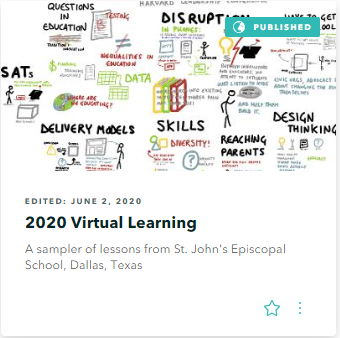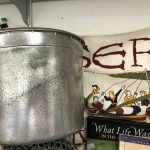The readings this week have been valuable and thought provoking for me professionally as a teacher in an independent school. Being part of this type of learning community allows teachers a greater degree of academic freedom in how and what we teach. This is both a blessing and a curse. As we explore the process of updating our curriculum, I am struck by the ways in which Wineburg, Lévesque and Calder speak directly to the process of how history education looks currently and might look like for our school long term.
I would like to explore the tension between coverage and uncoverage. Calder is teaching a survey course at the college level in which students are asked to write their own narratives of American history. That presupposes that students have been exposed to coverage in the past that allows them to construct these narratives. At some point, students do need to have an understanding of the historical narrative in broad brush strokes so that they may “uncover” history by contextualizing information. How do schools teach historical thinking skills and help students to practice uncovering history while still providing enough coverage to satisfy the need to have a basic understanding of an overarching historical narrative? How do we as teachers decide what is important to cover?
Secondly, Lévesque cites the work of Bruner who notes that “‘intellectual activity anywhere is the same . . . whether at the frontier of knowledge or in a third grade classroom . . . [noting] that [t]he difference is in degree, not in kind” (11). To what degree should students be exploring historical thinking in third grade? Developmentally, what does that look like, and what strategies should teachers be using at this level in order to scaffold skills that will help them uncover history down the line? Even at the earliest ages, teachers can train students to practice historical thinking skills using techniques and practices highlighted in Project Zero’s Thinking Palette. Metacognitive strategies such as KWL charts also are effective from early ages and, in many ways, bear a striking resemblance to the process Alston used in his assessment of Lincoln’s speeches. What are other strategies and ideas that could also work from 3rd through 8th grade.
Finally, I am curious about the role of narrative in expressing historical understanding. Lévesque differentiates writing about the past in recording a chronicle of the past from constructing a narrative about the past. Lévesque notes that narrative formulation seems to be more intuitive for students because of its familiarity to them “in the classroom and outside (e.g. novels, cartoons, films, textbooks, and family stories” (136). I have seen student success in my own classroom in this regard when students adapt their oral history research papers into narrative scripts for their documentaries. Even students who struggle as writers and critical thinkers seem to “cross the threshold” in new ways when engaging in this style of writing. It actually gives me some pause in thinking about other activities I do earlier in the year. For example, I ask them to write a one paragraph historic analysis of a work of Renaissance art in much the same way they would do a literary analysis of a work of literature. Some students are successful, and others struggle. It gives me pause to rethink how I might be overlooking success in one area by not applying it to another. In thinking about my project, I wonder how using evidence to write a narrative story (while still citing evidence) about how an object might have come into existence might be more effective than writing a research paper or analysis of the object itself.
POST SCRIPT
Mills brings up a good point about Making, Mining, Marking and Mashing being essential elements of the history classroom in 2023. I would daresay that they are critical elements in any classroom in 2018. When our school first went 1:1 with iPads seven years ago, we overwhelmed ourselves with apps that were each designed to do one specific job. What we discovered was that students were experts in adapting elements from a few key apps and using them in completely unexpected ways. Notability became an novice artist’s best friend as it allowed students to trace over an image to create a custom coat of arms. The digital story telling app Puppet Pal’s was used as an image editing tool. When we gave students the resources, they were often much more creative than if I had provided a structured “how to” for them.
Similarly, in defining learning outcomes by insisting on something written as a work product, I may be limiting what students can envision as a learning outcome. Giving students the tools to demonstrate their knowledge in a maker space might give them a more authentic and successful opportunity to demonstrate their learning while allowing them to practice a real world skill that might someday be useful outside the context of the history classroom.
And, for some students, they might decided that doing something with history is exciting in the same way that dropping Mentos into a bottle of Diet Coke is always a treat to watch in the science lab, inspiring some budding chemist or future doctor. What if giving a student the opportunity to MAKE in history lab led her to investigate being a curator, an archaeologist or historian using digital tools to mine new ways to understand the past?
________________________________________________________________
Lendol Calder, “Uncoverage: Toward a Signature Pedagogy for the History Survey,” The Journal of American History, volume 92, no. 4 (March 2006), pp. 1358-1369.
Lévesque, Stéphane. Thinking Historically. Toronto: University of Toronto Press, 2008.
Kelly, Mills. “The History Curriculum in 2023.” edwired (blog). January 2013.
Wineburg, Sam. “Historical Thinking and Other Unnatural Acts.” The Phi Delta Kappan 80, no. 7. March 1999. p. 488-499.



